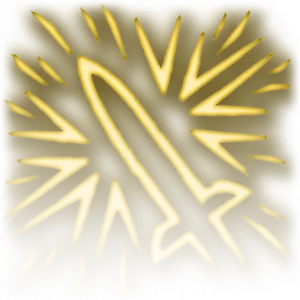Ad placeholder
Divine Smite (reaction): Difference between revisions
Jump to navigation
Jump to search
HiddenDragon (talk | contribs) (Updated damage fields) |
No edit summary |
||
| Line 20: | Line 20: | ||
| granted by feats = | | granted by feats = | ||
| granted by items = | | granted by items = | ||
| used by creatures = Anders, Zevlor | | used by creatures = Anders, Zevlor, Minthara | ||
| other ways to learn = | | other ways to learn = | ||
| variants = | | variants = | ||
Revision as of 01:21, 7 February 2024
Also see
Divine Smite is a reaction. The reaction can be done after successfully hitting a target with any melee weapon attack, and can be used multiple times in one attack (e.g. while dual-wielding). It is the reaction version of .
Description
Your weapon deals an additional 2d8![]() RadiantDRS, increased by 1d8
RadiantDRS, increased by 1d8![]() Radiant when attacking Fiends or Undead.
Radiant when attacking Fiends or Undead.
Properties
At Higher Levels
- Divine Smite gains extra damage when consuming spell slots of higher levels. When used at 2nd Level or higher, damage increases by 1d8
 Radiant for each Spell Slot Level above 1st. This damage is capped to 5d8, so using a spell slot above 4th spell level adds no further damage.
Radiant for each Spell Slot Level above 1st. This damage is capped to 5d8, so using a spell slot above 4th spell level adds no further damage.
How to learn
Notes
- Does not cost a
 Reaction point.
Reaction point. - In-game the reaction is split into one reaction for normal hits called Divine Smite and one for critical hits called Divine Smite: Critical Hit per level.
- This means that with a level 2 spell slot you will have four reactions. Two for each level.
- By default Divine Smite: Critical Hit is on auto and Divine Smite is disabled.
- In-game Divine Smite is listed under Class Actions in your spellbook.
- Despite consuming spell slots, Divine Smite is not a spell. It can be cast when .
